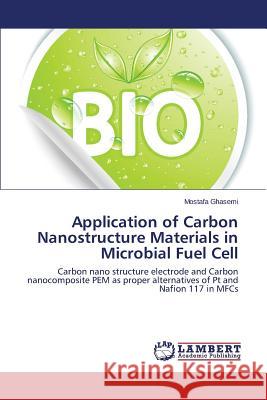Application of Carbon Nanostructure Materials in Microbial Fuel Cell » książka
Application of Carbon Nanostructure Materials in Microbial Fuel Cell
ISBN-13: 9783659615764 / Angielski / Miękka / 2014 / 200 str.
In this book application of carbon nanostructure materials as the cathode electrode and good nanocomposite proton exchange membrane in microbial fuel cell was discussed. As the main obstacle of commercialization of microbial fuel cell is high price of Pt as the most common cathode catalyst which covers about 50% of the whole capital cost of the system beside proton exchange membrane which is mostly Nafion 117 that near 40 % of the capital cost of the microbial fuel cell. This book is offering some new cathode catalyst (Activated carbon nanofiber) and also Nafion/Activated carbon nanofiber as the novel proton exchange membrane to be proper alternatives for Pt and Nafion 117 and also a big stepping stone for operating more commercial microbial fuel cell process. In this book also performance of this new found cathode catalyst and proton exchange membrane was compared with traditional system which is working with Pt and Nafion 117. The last part of the book also is new suggestions for continuing this work for reaching to a more commercial microbial fuel cell which have high potential for using in real scales.
In this book application of carbon nanostructure materials as the cathode electrode and good nanocomposite proton exchange membrane in microbial fuel cell was discussed. As the main obstacle of commercialization of microbial fuel cell is high price of Pt as the most common cathode catalyst which covers about 50% of the whole capital cost of the system beside proton exchange membrane which is mostly Nafion 117 that near 40 % of the capital cost of the microbial fuel cell. This book is offering some new cathode catalyst (Activated carbon nanofiber) and also Nafion/Activated carbon nanofiber as the novel proton exchange membrane to be proper alternatives for Pt and Nafion 117 and also a big stepping stone for operating more commercial microbial fuel cell process. In this book also performance of this new found cathode catalyst and proton exchange membrane was compared with traditional system which is working with Pt and Nafion 117. The last part of the book also is new suggestions for continuing this work for reaching to a more commercial microbial fuel cell which have high potential for using in real scales.











